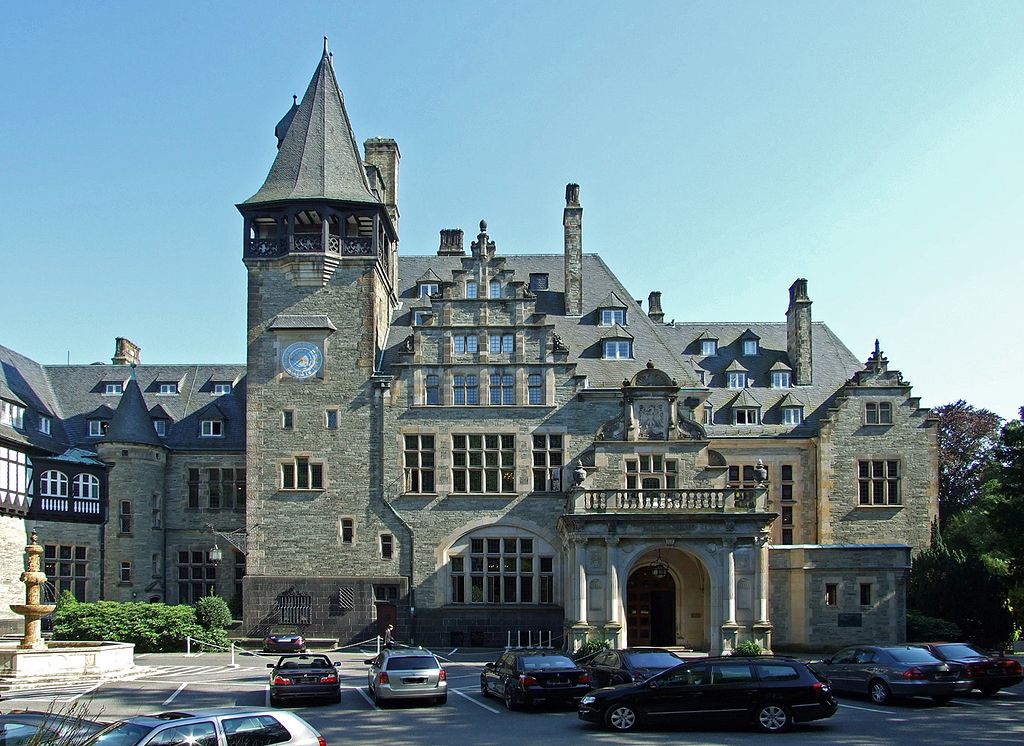While Virginia Fontaine witnessed how the occupation forces helped find and repatriate art stolen by the Nazis during her time in post-World World II Germany, the Nazis weren’t the only ones to burglarize homes. Allied military occupying local homes in Germany during the war were reported by the Stars & Stripes military newspaper of stealing and selling art, jewelry, and houseware, among other heirlooms and valuables – $100 million dollars worth.
During allied military occupation, the army needed large spaces for living and directing operations, and frequently moved into the German castles and homes, evicting the families who reside within them, giving them only hours of notice to move out.
One such place was the Kronberg castle, which became a military Office’s Club. Captain Kathleen Nash, the club’s manager, and her later husband, Colonel Jack W. Durant, along with Major David Watson discovered the family’s crown jewels and gold and silver housewares worth over $7 million (over $100 million in 2021 dollars) buried under the castle’s cellar. Overcome by temptation, they proceeded to steal and ship items to relatives in small packages in the regular mail.

The army arrested the larcenists when Queen Victoria made a formal complaint on behalf of her granddaughter, the Kronberg castle Princess of Hesse. The court-martial trial revealed a litany of escapades: jewels appeared in railroad checkrooms; the Captain’s relatives were discovered eating with gold plated knives and forks in their kitchen in Wisconsin; gold melted from jewelry settings was buried in a West Virginia backyard; an entire shoebox of diamonds disappeared. Unfortunately, the family recovered only ten percent of their stolen jewels.
They sentenced Major Watson to three years, Captain Nash Durant to five years, and Colonel Durant to fifteen years of hard labor with dismissal from service and forfeiture of pay. Virginia remarked, “They didn’t know that the Princess von Hessen (sic) was a [grand] daughter of Queen Victoria and England takes care of its own.”
Coincidentally, Hanna Bekker’s sister, Eugenie vom Rath Kiep, lived a half-mile away from the castle in Kronberg in a similar residence. While not quite a court, it was still a 50-room stone house on twenty acres including a cottage, a garage, and stables with living quarters for servants. They too were occupied by the military in April 1945 with five hours to vacate, leaving their home filled with thier valuable art, antiques, and silver. Fortunately, they already had a detailed inventory of the home’s belongings, so when they learned that tapestries, paintings, and antiques were removed, they had a recourse of action. Eugenie Kiep’s niece was married to an American Naval Commander, Donald MacDonald, and Eugenie’s and Hanna’s brother William H. Vom Rath had moved to Glen Head, New York, and was a US citizen. Commander MacDonald sent letters to the Frankurt Colonel in charge of the occupations and the State Department until the belongings were returned.
The army also occupied Hanna Bekker’s art-filled home in Hofheim outside of Frankfurt in May 1945 with only 1 ½ hour’s notice. She quickly buried her silver in the garden but was terrified the soldiers might burn her wooden sculptures for firewood and damage paintings. Thankfully she discovered upon her permitted return in October 1945 that all was unharmed except for some lipstick on a stone sculpture by Lembruck. To learn more about Hanna Bekker, visit the new website that describes her life.
Sources:
1947-4-28p4-‘Dime-Novel’ Story Nears Climax In Kronberg Jewel Trial
1973-12-8-VHF Lecture on Post War Experience, Unitarian Universalist Church, Guadalajara, Mexico